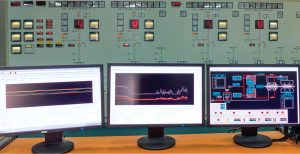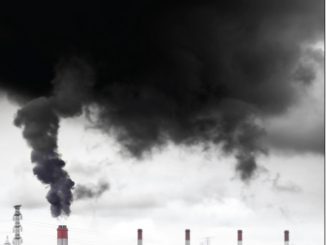 India’s installed thermal power capacity of 239 GW accounts for 56 per cent of the country’s total installed capacity and is the primary source for meeting the nation’s power demand. It is, therefore, imperative that thermal power plant (TPP) operators efficiently cater to this demand while ensuring cost-effectiveness. Developers are increasingly digitalising the operations and maintenance of plants to keep pace with ongoing technological developments and optimise their thermal fleet. The engineering and operation of TPPs are undergoing a positive transformation, especially in terms of plant optimisation, monitoring, maintenance and operational efficiencies. This shift is, in part, a result of the country’s sustainability goals, which encompass improving energy consumption, promoting decarbonisation, and adopting clean energy.
India’s installed thermal power capacity of 239 GW accounts for 56 per cent of the country’s total installed capacity and is the primary source for meeting the nation’s power demand. It is, therefore, imperative that thermal power plant (TPP) operators efficiently cater to this demand while ensuring cost-effectiveness. Developers are increasingly digitalising the operations and maintenance of plants to keep pace with ongoing technological developments and optimise their thermal fleet. The engineering and operation of TPPs are undergoing a positive transformation, especially in terms of plant optimisation, monitoring, maintenance and operational efficiencies. This shift is, in part, a result of the country’s sustainability goals, which encompass improving energy consumption, promoting decarbonisation, and adopting clean energy.
NTPC Limited is at the forefront of implementing digital solutions for its TPPs. The company is adopting digital tools and new-age technologies to enhance operational efficiency and optimise resource utilisation. It is undertaking projects for incorporating robotic process automation, artificial intelligence (AI) and machine learning (ML) into business processes. It considers digitalisation as an opportunity to facilitate faster decision-making, reduce costs through automation and maintain a long-term competitive advantage. The NTPC Energy Technology Research Alliance (NETRA), NTPC’s state-of-the-art centre dedicated to research, technology development and scientific services, is working on cutting-edge technologies for the development of robotics solutions for inspecting cooling water ducts and water pipelines, conducting visual inspections of boiler headers and internally inspecting the first pass of boilers. It is also working on asset digitalisation and monitoring through drones, as well as the development of novel sensors to increase reliability and safety, and reduce the time and manpower needed for inspection and monitoring. NETRA’s initiatives have helped stations in analysing failures and preventing them. Activities such as regeneration treatments of resins, chemical cleaning/treatment and corrosion control measures have helped stations improve efficiency and the availability of boilers, heat exchangers, cooling towers, and other components.
Digital tools and solutions for TPPs
Condenser performance monitoring and diagnosis: A surface condenser is a critical heat exchanger within a power plant, and its performance plays a significant role in determining the plant’s heat rate and efficiency. Digital solutions for condensers facilitate real-time monitoring of condenser key performance indicators (KPIs), anomaly detection based on historical behaviour, recognition of deviated parameters and identification of root causes. They also provide early warning alerts, prediction of condenser performance under different load conditions, insights into factors influencing condenser performance, thus helping in planning any maintenance actions.
Boiler modelling and performance optimisation: The boiler is a critical component in a TPP. A well-designed boiler and its efficient operation are essential for enhancing the performance and reliability of a power plant, especially considering the fact that coal-based TPPs are designed to operate on baseload conditions reliably, but often operate under partial load conditions to accommodate the variable generation from renewables. To this end, digital solutions provide insights into boiler operating conditions, predict boiler performance when using different qualities of coal, guide operators towards optimising boiler operation, assist in coal purchase decisions, and enable the evaluation and prediction of temperature profiles and heat absorption across each of the heating sections of the boiler. Additionally, they help in the evaluation and prediction of boiler performance under varying load conditions.
Pump performance monitoring and diagnosis: The performance, reliability and availability of critical pumps play a vital role in ensuring the productivity of plants. The digitalisation of TPPs can help operators in analysing and optimising the performance of their pumps. This is achieved by monitoring pump KPIs in real time, detecting anomalies based on historical behaviour, recognising deviated parameters, identifying root causes and providing early warning alerts, predicting performance under different operating conditions, planning for any maintenance actions, reducing auxiliary power consumption, and predicting failures and the remaining useful life.
Cooling tower performance monitoring and diagnosis: Cooling towers are widely used in power plants to dissipate process heat into the atmosphere through evaporative cooling and sensible cooling. As previously mentioned for other components, digital solutions for cooling towers in TPPs also monitor their KPIs in real time. Furthermore, they help evaluate the cooling tower’s capacity under different atmospheric and load conditions, improve the mean time between failures for mechanical components, predict the optimum cooling water temperature for different load conditions, reduce water and auxiliary power consumption, and also provide early warning alerts and root cause analysis for any performance deviation.
Remote energy monitoring and analytics: TPPs generate electricity, but, like any other facility, they also consume electricity – be it auxiliary consumption for equipment or to power offices and other establishments. Hence, even TPPs need to optimise their energy consumption in order achieve net zero emissions. In this regard, digital solutions can provide centralised real-time energy monitoring, early warning alerts for deviations, improved insights into energy profiles through predictive analytics, and recommendations for energy optimisation, reduction in operational costs, better capacity utilisation and reduction in the carbon footprint.
Digital twins: A digital twin is a cyber-physical system that replicates the behaviour of a real-life physical system while maintaining real-time communication with the actual system and makes recommendations to improve plant operations. It uses the power plant’s past data and advanced algorithms to predict present plant behaviour and make prescriptive decisions for optimising plant performance.
A digital twin of the boiler can utilise the power of internet of things (IoT), AI and digital technologies to detect changes in the coal. Digital twins of boilers can reduce SO2 and NOx emissions and significantly cut coal consumption. A digital twin of a flue gas desulphurisation system can identify the optimal operating conditions required to maintain consistent SOx removal efficiency. Additionally, the predictive maintenance module of the twin can prevent catastrophic failures through early fault detection and dynamic root cause analysis.
Other digital solutions: Other components of TPPs can also benefit from digitalisation. For instance, in terms of coal inventory management, digital solutions can help reduce losses and spillage, along with determining the optimal blending ratio for the operator. Moreover, real-time monitoring of coal stocks can aid in forecasting probable shortages and offer suggestions for averting this scenario. In terms of power cycle chemistry monitoring and analysis, digitalisation can lead to a reduction in boiler tube and pressure part failures, lower maintenance costs due to unplanned shutdown, and optimised chemical dosing for variable operating conditions.
Conclusion
Overall, with digitalisation, TPPs are moving towards a more preventive and predictive approach to power plant operation, and digitalisation is proving to be a critical factor in this shift. Adopting digital technologies and building capabilities around data and analytics, cybersecurity, ML and AI can help gencos in improving regulatory compliance, reducing carbon emissions, running more effective operations, scaling up resources to meet shifting demand, optimising asset management, managing a digital workforce and using generated data more effectively. Many utilities have already begun to build capabilities and invest in various digital solutions such as digital twins, AI, IoT, ML, cloud and analytics to achieve these goals. Digitalisation, however, poses security challenges and increases the vulnerability to cyberthreats. Utilities should proactively build a robust cybersecurity strategy to manage these risks.



